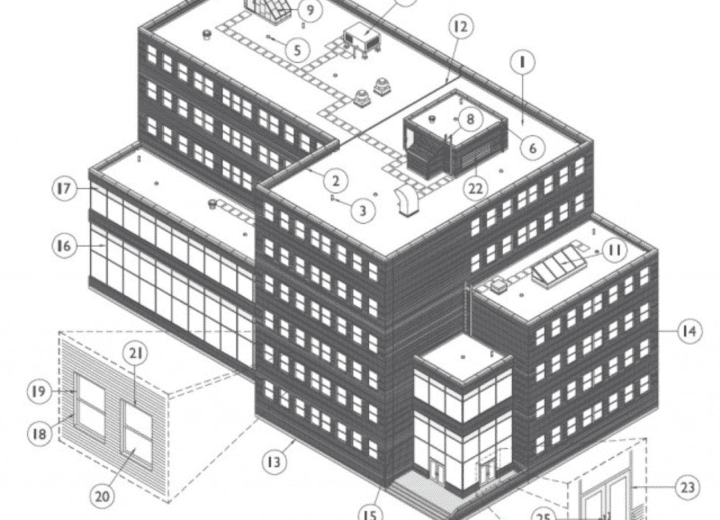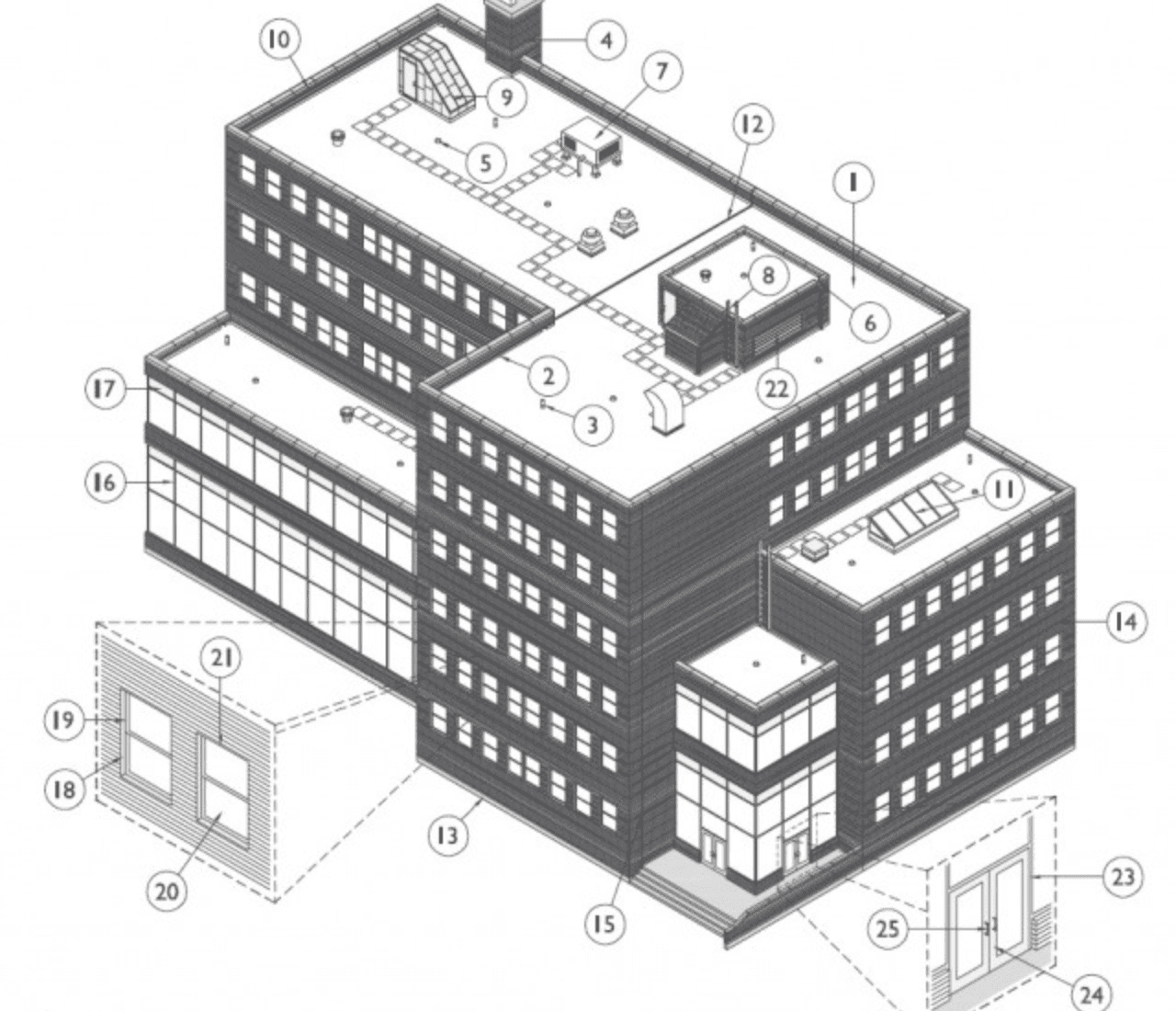Building Exterior Inspection Guide
Download the full building exterior checklist here: Building Exterior Checklist
May 2016 – Hoffmann Architects presents a printable building envelope inspection checklist to guide building owners and managers in assessing conditions and planning ahead for repairs.
When and Why to Inspect
At least twice annually, it’s important to conduct a thorough inspection of the building enclosure to identify signs of deterioration or failure. By correcting minor problems before they become major ones, the prudent building owner or facility manager can extend the lifespan of building components and avoid major capital expenditures. Regular inspection can also identify materials approaching the end of their service life, so that replacement can be scheduled and budgeted in advance. Otherwise, building systems will fail without warning, requiring rushed and, often, unsatisfactory emergency repair.
The Big Deal about Small Repairs
The building enclosure is made up of many components that work in concert to keep the building watertight and secure. If any one of these systems becomes compromised, inter-related building elements are at risk for failure—and costly repair. For instance, what may appear an insignificant open joint at a parapet cap can allow a surprising amount of water to enter the wall. As this water migrates down through the building facade, it rusts steel framing, soaks insulation, and displaces wall surfacing. The water also works its way under the roof membrane, leading to energy loss and leaks. While repair of cap joints is relatively simple, rehabilitating water-damaged roof and wall systems is anything but.
How to Use this Guide
Because the risks of deferred repair work carry a hefty price tag, it’s worth investing a few hours on a regular basis to look for signs of trouble. This guide is intended not as an exhaustive list of all possible points of wear, but rather as an overview of typical building systems and common problems. Use the checklists to keep written records of observations, so as to prioritize repairs and anticipate major replacements. Should any concerns arise, diligent record-keeping can assist a design professional in pinpointing the source of the problem and recommending an appropriate rehabilitation strategy.

